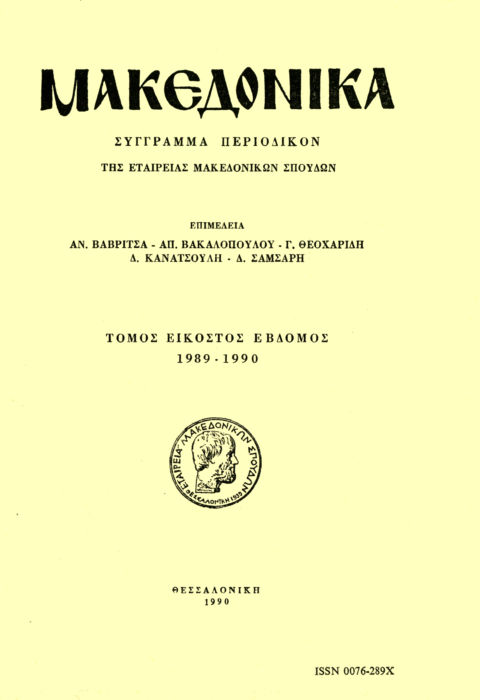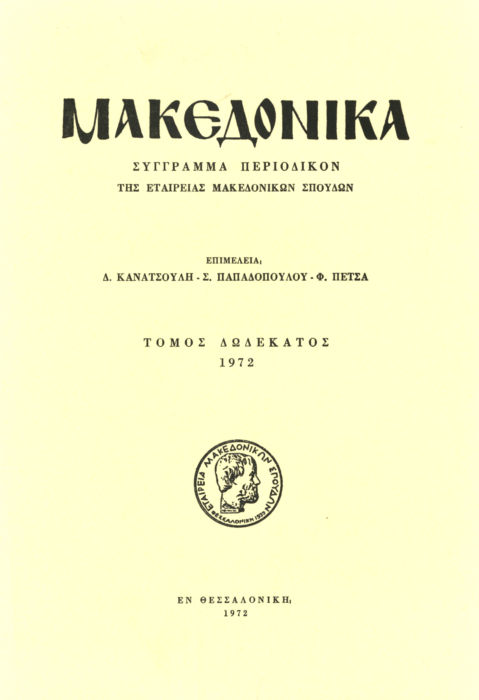The village Solin (Σωλήν) in Kassandra
Abstract
In 1419 the monastery of Aghios Panteleimon in Mount Athos re ceived a large estate on the peninsula of Kassandra. In the definition of its boundaries is mentioned «τα δίκαια τοΰ Σωλήνος» situated on its Southern border (Actes S.P., 1813).
Based on later documents of Mt Athos and archaeological notes, it is proved that in the area concerning us there was the village «Σωλήν», unknown from other sources. Today only the locality name can be found «Σουλήνα (ή)» and some traces of a medieval settlement still alive during the Turkish Rule probably until 1821. On the same site is located a remarkable settlement of the Early Bronze Age, as well as the remains of a large ancient settlement and we propose its identification with the «Νέαν πάλιν» of Herodotus (Z' 123). SE of Solin there was located a destroyed noteworthy Macedonian tomb and further South one can notice the ruins of a large Palaeochristian edifice.
Article Details
- How to Cite
-
Παπάγγελος Ι. Α. (1989). The village Solin (Σωλήν) in Kassandra. Makedonika, 27(1), 171–182. https://doi.org/10.12681/makedonika.98
- Issue
- Vol. 27
- Section
- Articles

This work is licensed under a Creative Commons Attribution-NonCommercial-ShareAlike 4.0 International License.
Authors who publish with this journal agree to the following terms:
- Authors retain copyright and grant the journal right of first publication with the work simultaneously licensed under a Creative Commons Attribution Non-Commercial License that allows others to share the work with an acknowledgement of the work's authorship and initial publication in this journal.
- Authors are able to enter into separate, additional contractual arrangements for the non-exclusive distribution of the journal's published version of the work (e.g. post it to an institutional repository or publish it in a book), with an acknowledgement of its initial publication in this journal.
- Authors are permitted and encouraged to post their work online (preferably in institutional repositories or on their website) prior to and during the submission process, as it can lead to productive exchanges, as well as earlier and greater citation of published work (See The Effect of Open Access).






